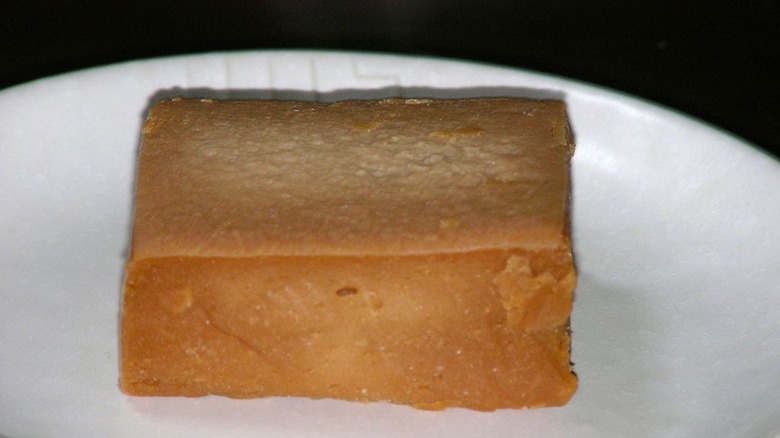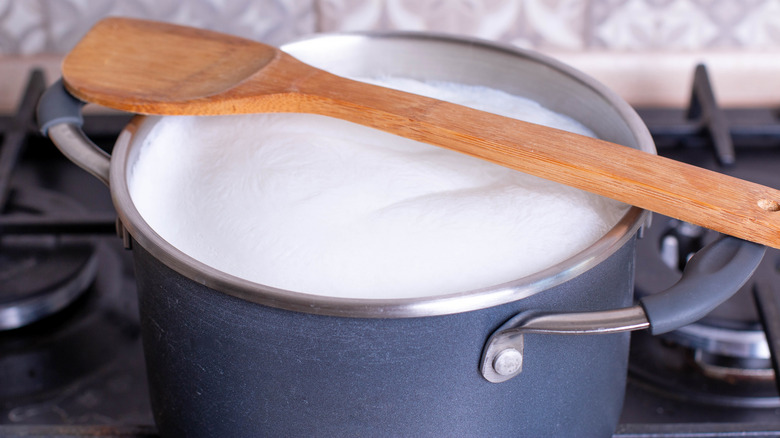The Ancient Cheese Japan Resurrected During The COVID Pandemic
If we had to find a silver lining in the COVID-19 pandemic (not an easy thing to do, admittedly) it would have to be the resurgence of home cooking. While that particular food trend waned somewhat when restaurants reopened for business, the months that we spent trapped indoors brought many of us closer to our kitchens than ever before, and that can only be a good thing. Perhaps the most notable trend in the U.S. was homemade sourdough bread, reconnecting people to an ancient culinary art form. In fact, The Economist reports that sourdough likely dates back to the days of ancient Egypt, but it wasn't the only archaic food to see a resurgence during the pandemic.
Across the Pacific Ocean, the people of Japan faced a very specific food crisis at the pandemic's outset. In late February 2020, then-prime minister of Japan Shinzo Abe ordered all schools to shut their doors and send students home to bunker down with their families. According to Gastro Obscura, this created a crisis for Japanese dairy farmers, as the country's school lunch program was one of the primary buyers of dairy products. In fact, about 10% of Japan's domestic food production goes to feeding elementary and middle school students and sending them home created an unprecedented surplus of milk. What could be done with it? Why, making ancient cheese, of course.
Reviving a 1,000-year-old recipe
Faced with a massive surplus of milk, Japanese farmers issued a plea to the public, asking people to use more milk at home. Per Gastro Obscura, the populace did rise to the challenge, buying more milk to keep the farmers in business, but there was a bit of a problem. While milk is popular with school children, Japanese adults drink very little of it. However, other dairy products, such as yogurt and cheese, are staples for many adults, a fact that launched a fascinating culinary trend. The World reports that, during the pandemic, a recipe began circulating on Japanese social media explaining how to make a type of cheese called 'so.'
So is pronounced with a short o sound, as in "hot," and according to Gastro Obscura, it originated during the Nara and Heian periods of Japanese history, which lasted from 710-794 and 794-1185 respectively. A book called "Engishiki," written around 927, contained instructions for making so, which entails cooking milk down to a tenth of its original volume. It's a straightforward enough technique, and according to Hiroko's Recipes, it only requires one ingredient: milk. Gastro Obscura reports that the end product is a bit like paneer, and while it doesn't have much flavor in and of itself, it pairs well with salty accompaniments like crackers.

